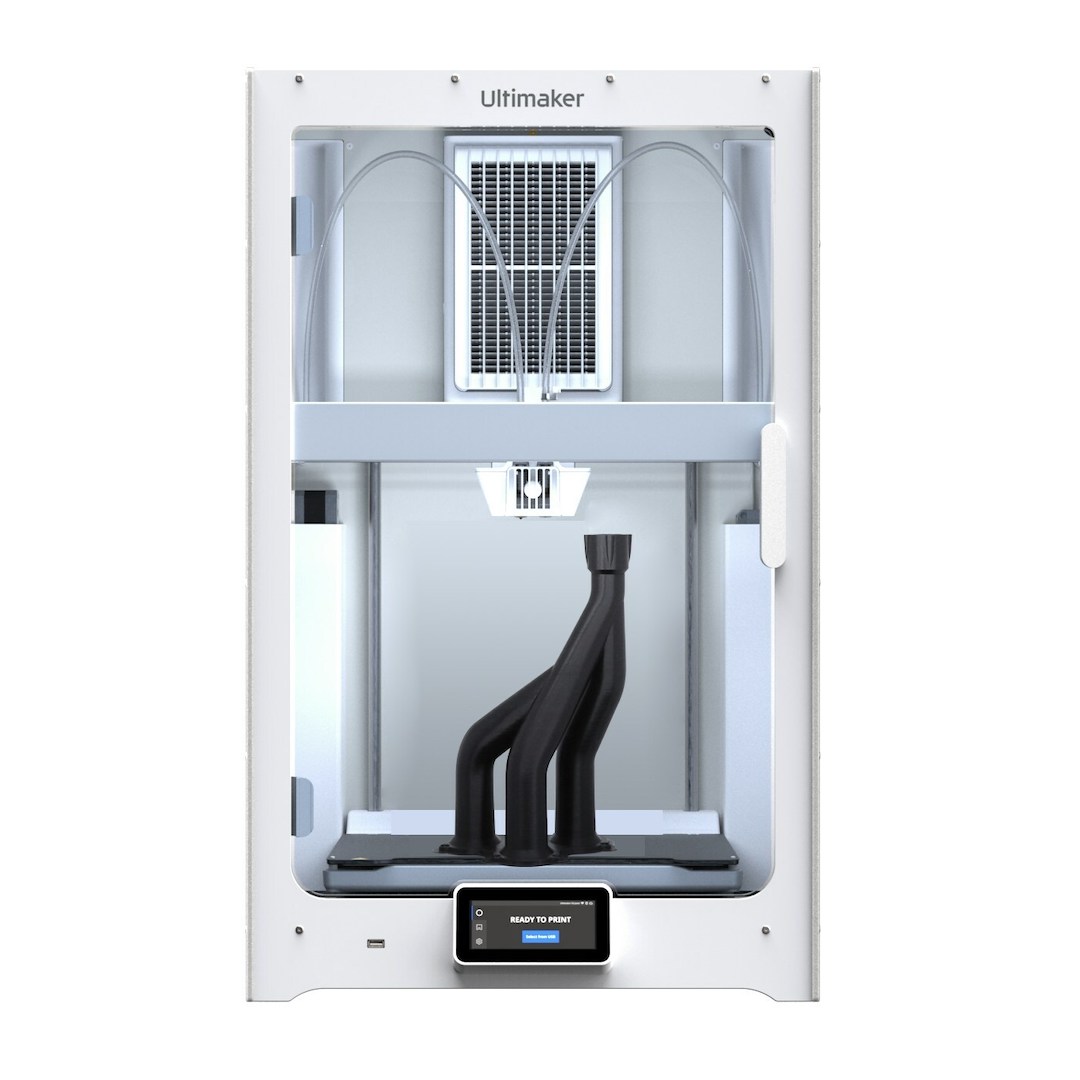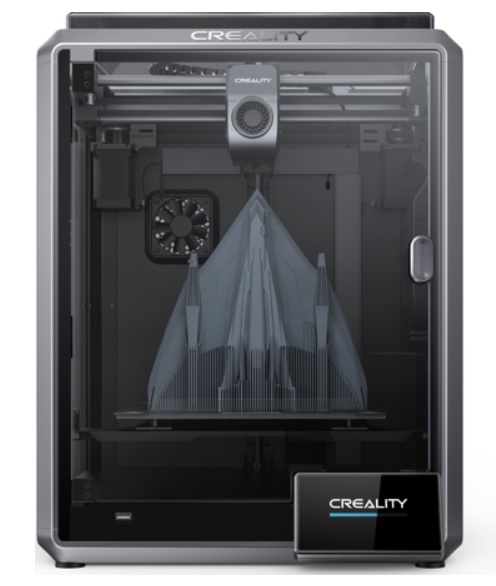Compare S7 vs K1
Comparison between the best 3D printers
Choose the best 3D printer at the best price. The cheapest 3D printers are here.
Buy a 3D printer here with 3D Fila.
 |
 |
|
| Model | S7 |
K1[BUY K1] |
| Printing Material | Filament | Filament |
| Buy Filament for Ultimaker S7 | Buy Filament forCreality 3D K1 | |
| Estimated price | $8300,00 | $399,00 |
| Manufacturer | Ultimaker | Creality 3D |
| Release Year | 2022 | 2023 |
| Print Volume [mm] | 240x330x300 | 220x220x250 |
| Printer Size [mm] | 585x495x800 | 355x355x480 |
| Weight [kg] | 29 | 12,5 |
| Power Loss Recovery | YES | YES |
| Enclosed printer | YES | YES |
| Bed Leveling | Automatic | Automatic |
| Filament End Sensor | YES | YES |
| Bed type | Heated | Heated |
| Power supply system | Bowden | Direct Drive |
| Standard nozzle | 0,4 | 0,4 |
| Maximum Nozzle Temperature [°C] | 280 | 300 |
| Maximum Bed Temperature [°C] | 120 | 120 |
| Maximum printing speed [mm/s] | 180 | 600 |
| Filament holder | YES | YES |
| Camera for supervision | YES | YES |
| Recommended filaments | PLA, ABS, PETG, PC, Nylon, Tritan, PP | ABS, PLA, PETG, PET, TPU, PA, ABS, ASA, PC, PLA-CF, PA-CF, PET-CF |
| Recommended slicers | Cura | Creality Print; Cura, Simplify3D e PrusaSlicer |
| Maximum Resolution [mm] | 0,1 | 0,1 |
| Processor | ||
| Display | Display touchscreen 4,7'' | Display touchscreen 4,3'' |
| Power Supply | 500 W | 110/220V / 350W |
| Connectivity | USB / Wi-Fi | Ethernet / USB / Wi-Fi |
| Operating systems | Windows, Mac, Linux | Windows, Mac, Linux |
| Date of registration in the system | 2023-01-28 | 2023-04-17 |
| Release date | 2022 | 2023 |
| Extra features | The UltiMaker S7 printer features a series of technological innovations to enhance 3D printing. It incorporates a flexible, magnetic build plate with PEI coating, promoting better adhesion and easier part removal. Its new inductive sensor significantly improves bed leveling, ensuring perpendicular and accurate prints. In addition, the S7 has a higher quality camera for remote monitoring, an integrated air filter, and uses a unique glass door to maintain a constant temperature in the print chamber. The machine is also compatible with the expansion kit for metal printing. | The K1 is an extremely fast FDM 3D printer, reaching 600mm/s, 12 times faster than standard models. Equipped with a Core XY system and lightweight print head, it offers energy efficiency and high print quality. It stands out for its dual-gear extruder and quickly heated hotend, as well as dual cooling to prevent warping. Its robust structure ensures stability at high speed, with optimized software to speed up the printing process. |
| Support for multiple colors and materials (AMS and CFS) | NO | NO |
Notes * |
||
| Cost-benefit | 1 / 10 | 7 / 10 |
| Hardware | 3.6 / 10 | 4.2 / 10 |
| Tela | . | . |
| Print volume | 4 / 10 | 3 / 10 |
| Performance | 1 / 10 | 5 / 10 |
| [BUY K1] |
Conclusion |
| In comparing the Ultimaker S7 and Creality 3D K1, several critical factors influence the final recommendation for potential buyers. The Ultimaker S7, priced significantly higher, offers a more advanced array of features tailored for professionals and serious hobbyists. It boasts superior build quality, enhanced automatic bed leveling technology, and a more sophisticated monitoring system. These attributes make it suitable for complex projects requiring precision and reliability. However, its higher cost may not present the best value for casual users or those on a budget, as evidenced by its lower performance rating in terms of cost-benefit. On the other hand, the Creality 3D K1, with its competitive pricing, presents an excellent option for those prioritizing speed and efficiency. Capable of achieving print speeds up to 600mm/s, the K1 excels in printing time-sensitive projects while still maintaining good print quality. Its direct-drive system and dual cooling features help minimize potential print failures, making it a solid choice for those working with a variety of filaments. Ultimately, the decision comes down to specific needs and budget. For users seeking high-end capabilities and who are willing to invest more for comprehensive features, the Ultimaker S7 stands out. However, for budget-conscious buyers who value performance, speed, and overall cost-efficiency, the Creality 3D K1 is a commendable choice that does not compromise on essential functionalities. Each printer has its strengths, and the best option depends on the individual user’s priorities and applications. |

